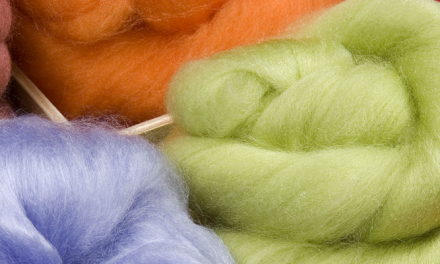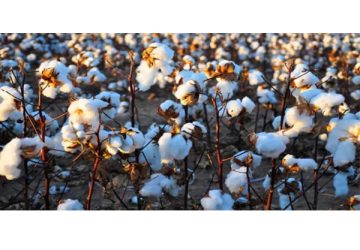 How to improve cotton availability in the country? This issue a serious one though is worrisome for both government and the textiles and apparel sector. Admittedly there is a shortage. The latest data show that cotton output has come down to around 310-320 lakh bales against the requirement of 320-350 lakh bales in the coming year. Peak production at 398 lakh bales was achieved in 2013- 14. The availability needs to be increased by 50 to 75 lakh bales to utilise the highly capital intensive idle capacity in the value chain.
How to improve cotton availability in the country? This issue a serious one though is worrisome for both government and the textiles and apparel sector. Admittedly there is a shortage. The latest data show that cotton output has come down to around 310-320 lakh bales against the requirement of 320-350 lakh bales in the coming year. Peak production at 398 lakh bales was achieved in 2013- 14. The availability needs to be increased by 50 to 75 lakh bales to utilise the highly capital intensive idle capacity in the value chain.
Production has been seriously affected because of non- availability of the latest seed technology (Btlicence has already expired) and not following global best agronomy practices. What has made domestic cotton costlier is the 11 percent import duty on the fibre in the 2021-22 budgets. The minimum support price (MSP) announced for the 2024-25 season had rendered the lint cotton prices higher by 15-20 percent. MSP is not compensating farmers due to lower productivity as well as industry and the exchaquor. Cotton prices became highly volatile after removal from the Essential Commodities Act.
With demand outstripping production the country has slipped into the deficit zone. Out of the estimated production of 320 lakh bales, only 250 lakh bales are suitable to produce high value added and export products from which 25-30 lakh bales get exported in the form of cotton, yarn, fabrics, garments and made-ups. So there is a shortage of good quality cotton. This reinforces the industry’s demand for removal of the import duty to improve availability and boost exports. Moreover, several mills use only hundred percent export specialty cotton varieties to produce high value added products to cater to domestic and export markets. In addition and that is important is that certain buyer insist on using imported cotton to meet their quality requirements.
In this context, a question arises as to how to achieve the government’s vision to increase the industry’s business size from the present dollar 162 bn dollar 350 bn by 2030 – domestic 250 bn and exports 100 bn. To achieve the target, raw materials to the tune of 120 bn kg will be required.
In MMF, we are not globally competitive and have constraints in producing value added items at internationally competitive prices. In cotton, India is the world leader of producing higher value added products. Even 65 percent of the global average productivity (excluding India) would enable this country to achieve 600 kg per hectare and produce 50 lakh bales by retaining 120 lakh hectare under cotton. India would need the latest technology to boost cotton output and help meet the target.
Industry leaders have given three options to enhance cotton availability. First is removal of the import duty on all types of cotton without any time frame. Around 15-20 lakh bales cotton is imported which constitutes around 5-6 percent of domestic production. The second option seeks to exempt the duty during April – October as farmers sell more than 90 percent of their produce during November – December which will not affect farmers, stabilise prices and ensure adequate availability and enable sustained growth.
The third option necessitates the imposition of sliding rates of duty (excluding extra-long staple cotton) allowing duty-free imports up to 20 lakh bales, levying 5 percent from 20 lakh bales to 50 lakh bales and 10 percent duty beyond 50 lakh bales imports.
About 65 percent of cotton area is rain fed, mainly in central and southern states irrigation. Cotton crop is highly prone to pests and diseases and low ginning production. Industry also wants steps to increase ELS production from the current level of around 5 lakh bales to 15 lakh bales by 2025 and to 20 lakh bales by 2030. Production was around 24.71 lakh bales during 1983-84 was less than 5 lakh bales. ELS cotton production turned surplus after the introduction of Bt Technology. It accounts less than 1.5 percent of the total production.
To further bridge the demand supply gap, industry leaders recommend increasing the MSP for ELS cotton branding it like Suprime, as well as raising productivity through integrated cultivation i.e. contract farming and establishment of ELS cotton mission directorate. It is also necessary to ensure availability of fine and superfine count yarn at competitive prices in the domestic market and boost exports. Fibre quality parameters need to be improved on par with Egyptian Giza and US Pima etc., ensure contamination free increase yield, and reduce cost of production and double farmer’s income.
The US has the best cotton quality standards, conducts bale to bale testing. In India only 29-32 percent of flowers get converted into fully matured cotton bales. In Israel it is 94 percent, 90 percent in Australia and Brazil and above 72 percent in most of the cotton growing countries.
Cotton growing regimes in India has different soil, climatic conditions, and rainfall pattern etc., Cotton farming has to be done to suit these conditions. It is to be noted that labour cost accounts for 47 percent of cotton cultivation for an acre of land. Mechanisation is a logical choice when the country is looking for improvements in yield and ways to managing agriculture concerns. In the absence of copy Rights Act, seed companies are giving hybrid seeds in India whereas rest of the world vises variety seeds. Usage of hybrid seeds has some issues and affects farmer’s income.
t is to be noted that India is the second largest producer and third largest exporter of cotton, accounting for 38 percent of global area, 22 percent production and achieving 55 percent of average global productivity. India imports less than 5 percent of its requirements. India’s area under cotton cultivation is 12.40 mn hectares; consumption is 5770 tonnes against the global figure of 37115 tonnes. The industry provides jobs for over 105 million people, especially those in the rural area and women folks across the nation. Around 12 mn farmers are engaged in cotton cultivation.
The pilot project of the agriculture ministry and the textiles ministry undertaken during the current season giving the thrust to high density planting, ELS cotton and better agronomy practices have shown a 40-60 percent increase in productivity. If this is replicated with adequate funding, cotton production can be increased to 425 lakh bales in two years. It is essential to import appropriate technology as it takes 10 years to develop and multiply commercially. Cotton productivity can be enhanced by adopting the global best practices. It calls for consistent scientific efforts and develop technology to increase the yield high density planting system, soil test based nutrient management, drip irrigation wherever possible with poly mulch.

















